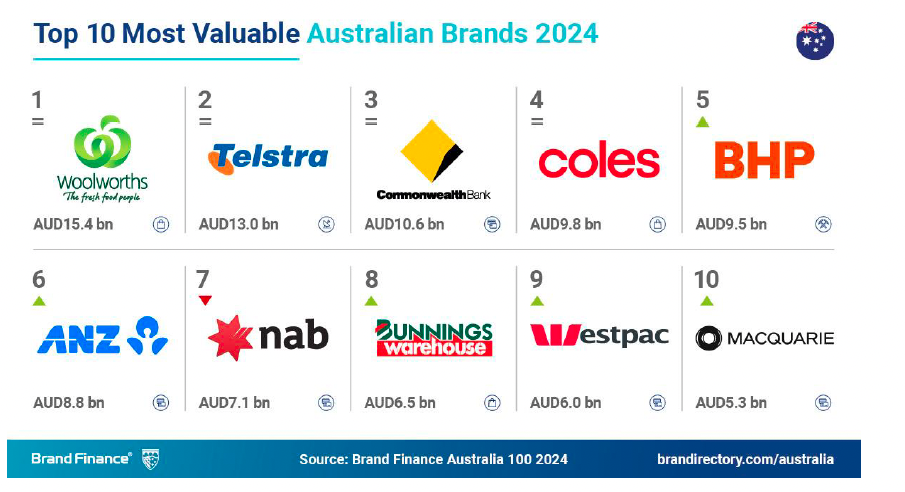‘Agencies get it, marketers were the missing link’: How cliché and heuristics left brands missing 40% of buyers

What you need to know:
- Broadcaster-audio-publisher collective Boomtown is paying off as regional media spend holds up amid a pressured broader market.
- A new trade ad campaign is landing with marketers and buyers, and cutting through cliché and disconnect between metro media and marketing types and Australia’s regions.
- Boomtown’s patch is home to some 9.8 million Australians who still have money to spend – and are spending more than metro counterparts in key categories like grocery.
- A reposition and new campaign led by marketing lead Leanne Glamuzina and conceived by Thinkerbell is opening more doors and changing marketer misconceptions, per Boomtown chair Brian Gallagher.
- But he said it’s now on the stakeholder’s media sales teams to show they can extract maximum value from collective marketing investment.
We just resort to cliché really quickly. So one of the things we wanted to do is try to make media people see themselves in the campaign. Just trying to break down that dichotomy between metro and the bush – there's this whole other massive market, which is regional.
Geelong and short of it
Five years ago regional media was taking a 10 per cent share of media budgets – despite being home to close to 40 per cent of the population. Now it’s taking 17.5 per cent. “So it’s almost doubled”, per Boomtown chairman Brian Gallagher. “That’s an outstanding outcome, because I don’t know if you’ve noticed, but media markets are pretty challenged at the moment.”
He won’t put a number on the regional media collective’s next target. But Gallagher’s a dyed in the wool media salesman unlikely to be satisfied until fair share is achieved. Which ultimately means doubling up again – but he said that’s squarely on the publishers that fund Boomtown to deliver.
“You can have the greatest ad in the world, but if you don’t back it up at the retail point in the market with the customers, it’s not going to do anything for you,” said Gallagher.
Two months since launching a major push via Thinkerbell – tagline ‘Population: Unexpected’ – the signals are strong. “I have never had so much positive feedback about any trade campaign,” said Gallagher.
But the overnight success is the culmination of years of co-ordinated work. Boomtown, backed by Southern Cross Austereo, WIN Television, Seven Network, ACM, ARN, Nine, News Corp Australia and Imparja Television, built a central planning hub in 2021 so that media buyers could brief once to all regional media players across the 14 ‘boomtowns’. It’s been amassing demographic and economic reference data and running MFA-backed master classes for media buyers since 2020 – to the point that media buyers were no longer the problem.
The problem – per Boomtown marketing lead Leanne Glamuzina, a long-term media marketer with Nova prior to heading up marketing at Koala – was marketers.
“I felt that from a brand perspective, the agencies were well versed … but it was the marketers which I felt were the missing link.”
She converted Koala – where she also worked with Thinkerbell – before taking the reins at Boomtown. “I did a test before leaving”. It worked. “Now they advertise in regional media, we constantly get briefs. So I knew it was an education piece.”
Resetting heuristics
Joining Boomtown last November, Glamuzina doubled down on the fact sheets and data, but then had to convince all the board stakeholders to agree to reskin and reposition Boomtown – no mean feat given the number of opinions in the room per Gallagher – but she said Thinkerbell’s concept nailed it.
“I’ve never seen a collective of so many different media organisations all simultaneously saying, ‘that’s it’ … The concept work was so good we could have almost just published that.”
Thinkerbell chief thinker Adam Ferrier said the idea was to jolt marketers out of unconscious bias. Regions, he said, don’t mean ‘the bush’. But dusty towns and the outback is what decades of advertising heuristics have made regional Australia in the collective mind’s eye.
“We just resort to cliché really quickly. So one of the things we wanted to do is try to make media people see themselves in the campaign – and that led to a lot of the imagery. Just trying to break down that dichotomy between metro and the bush – there’s this whole other massive market, which is regional.” And yet, regional media “is still undervalued … so we looked at that as a good place to start.”
Plus, it had the Boomtown data to work from, enabling a campaign that makes a legitimate case that ‘Newcastle is rivalling Newtown’, given young people are moving there in droves. Per that data, between 2021 and 2022, Newcastle was one of the top five Local Government Areas of migration from capital cities to regional centres – and 66 per cent of those moving to Newcastle are millennials with an average age of 30. Newcastle rents come in 30 per cent cheaper than Sydney and rent aside the cost of living is 10 per cent cheaper than Sydney. There’s the genuine prospect of buying a house and still having some disposable income.
Glamuzina is actually considering moving there.
“When we shot the campaign, I went to Newcastle for the first time, and I was blown away. I’m a Sydneysider but I’ve nearly reached my limit of living in Sydney, though I don’t want to lose access to Sydney. So [if I were to move to the regions] Newcastle would be my number one pick.”
For Ferrier it would be his former stomping ground at Bathurst, where he was once based as psychologist with the Department of Correctional Services. As well as offering abundant insight on the human condition, “It’s an amazing university town with a vibrant culture”, per Ferrier. “I’d also like to big up Hepburn Springs in Victoria.”
Smarter distribution
Gallagher won’t choose between his Boomtown children and instead will keep banging the drum for the Boomtown collective. The ‘Population: Unexpected’ campaign, he said, is opening more doors.
“The number of marketers that will willingly engage and have a conversation with us is really encouraging, which makes us want to keep going with it. Because there was so many years that I’ve been doing this when just getting a return phone call from a decision-maker was half the battle. We seem to have come a long way towards resolving that.”
He thinks there’s also at least some recognition from marketers that supporting Australian media has broader societal benefits as opposed to sending money offshore via other channels.
“You’re supporting news, voices, stories, commerce, because local media companies connect brands with audiences, and all of the revenue from the transactions that take place stay onshore – they serve their communities in many different ways, whether through GST or whatever it is. You don’t get that with [big] technology.”
But he reiterates the need for Boomtown’s media stakeholders to keep pushing hard.
“We’re focused on making sure the sales teams within the collective have got as much backup, information and motivation as they possibly can to keep going out and telling the story. We want to furnish them with the data, we want to furnish them with the insights and I think we have got one of the best trade marketing campaigns we could possibly have hoped for. But we will not get the bang for buck out of it unless the people on the ground do the work.”
For her part, Glamuzina is aiming to keep the campaign in market for at least a year to make sure it lands. “We see longevity in this. So often as marketers, we move away and move on to the next thing. But we just need to concentrate on this – and just keep educating.”
With close to 40 per cent of the population now within Boomtown’s regions, with more money to spend than many of their metro counterparts – and not actually living in the outback of the 1940s – that shouldn’t be too hard a lesson for marketers to heed.





